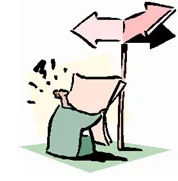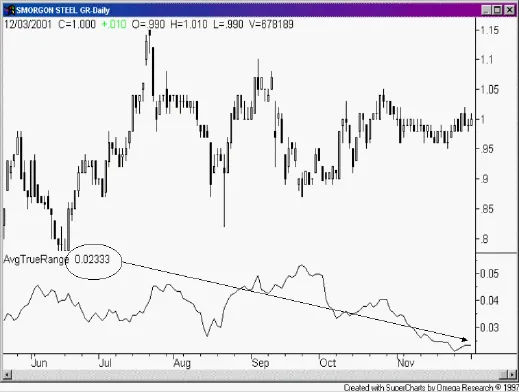What is ATR and how can it help me with Setting Stop Losses?
ATR and Stop Losses by Louise . Bedford
One of the key concepts that I use to trade the markets is Average True Range (ATR). It’s just a method for making sure stops aren’t too tight. If you get stopped out on a 3x ATR then so be it but it’s reasonable to assume that mostly 2x or 2.5x will keep you in.
True Range is an indicator initially defined by Welles Wilder. It is the greatest of the following for each period:
- The distance from today’s high to today’s low.
- The distance from yesterday’s close to today’s high.
- The distance from yesterday’s close to today’s low.
Average True Range: is the average of the true ranges over the past x periods (where x is specified by the user).
A simple definition is the move in cents that a share could reasonably be expected to make during a particular period. On a daily chart, it shows how much the share price is likely to go up or down in a day. It typically shows a figure compiled from the last 15 – 20 days price activity.
For example, when looking at the Smorgon Steel Daily chart, it is hard to mentally calculate how much this share’s varies on a daily basis. When looking at the ATR figure, this shows that on average, as measured over the past 15 days, this share goes up or down by 2.33 cents per day. This is typical behavior for this share. This has implications for position sizing, setting stops, entry and exit methods.
Volatility has no bias. Whether the share moves up or down in value is of no consequence to the ATR calculation. It is the amount that it moves, regardless of direction that counts.
Using Smorgon Steel as an example, if we were to use 3 ATR as an initial stop, have a look at the following calculation:
Current Price = $1.00
ATR = 2.33 cents i.e. 0.0233
To calculate where we would exit for an initial stop loss, based on a 3 ATR stop, apply the following formula:
Current Price – 3 ATR = Exit Price
$1.00 – (3 x .0233) = $0.93 (rounded)
Firstly, I like to look at average true range to make sure my stops are a sensible distance away from my entries for the timescale I am trading. One possible arrangement is to use 3 or 4 times the 10 day ATR for long term trades, 1.5 ATR for trades lasting 5 – 10 days, 1.0 ATR for trades lasting 1-3 days, and 0.25 ATR for intraday trades. The great thing about ATR is that it goes up when volatility increases so it gets the trader to use wider stops when the market volatility increases.
In this respect a 2 ATR stop level is appropriate for a short-term stop placement, a 3 ATR stop level is appropriate for a medium-term stop placement and a 4 ATR stop level is usually utilised by longer term traders.
This concept can also be combined with the 2% rule, which is another issue to consider.
ATR for Day Trading
As far as day trading, the ATR or average true range is simply an average over x period of the difference between the days highest value and its lowest value of the day. It can be seen visually by the length of candles or OCHL bars. When markets retrace the candles and ATR increase in size or value. In a bear market the size increases to an unbelievable degree. It’s an alternative measure of volatility but makes day trading like taking candy from a baby. In a normal long term bull market the FTSE will have a daily range of about 20-30 points. If you trade £10pp you might be lucky to win £150 from picking up around 15 pips. I reckon you have a reasonable chance of picking up around 50% of ATR on a fairly average day if you sit in front of the screen for the full trading day.


